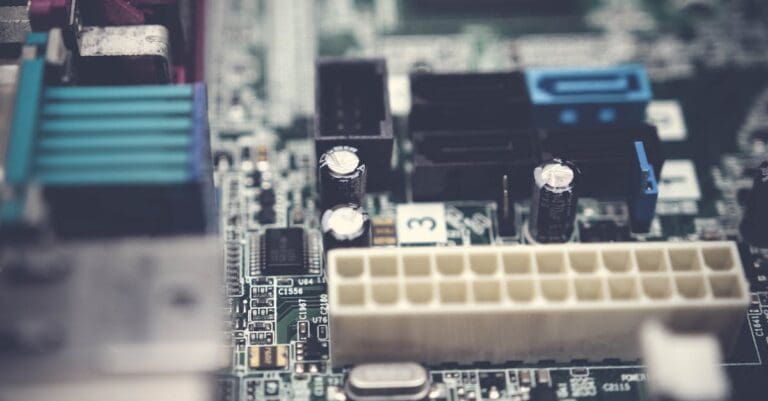Why AI Diagnostics Fails (And How to Avoid It)
AI diagnostics often promise to revolutionize healthcare, but why do they sometimes fall short of expectations? It’s tempting to think that this advanced technology can solve all our problems, yet real-world outcomes can be surprisingly different. The issue isn’t the technology itself but rather how it’s implemented, interpreted, and integrated into existing healthcare systems. As we navigate these challenges, we must remember that sophistication in technology doesn’t guarantee perfect results. Understanding the pitfalls of AI health technology can help us improve tools that diagnose diseases and support medical professionals.
With significant investments, such as the £21 million AI Diagnostic Fund in the UK, there’s a clear push to use AI medical imaging for faster and more accurate diagnoses. However, to harness the potential of these systems, we must address issues like data privacy and bias. If AI is to enhance medicine by offering predictive analytics and supporting clinical decisions, we need to ensure accuracy and reliability. Whether it’s in the radiology field or detecting diabetic retinopathy, AI’s role is growing, but without careful deployment, it’s easy to encounter failures instead of breakthroughs.
Curious about how AI in medical research can succeed where it often falters? Dive into the full article to explore practical solutions and insights that could transform your understanding of AI healthcare innovation.

Photo provided by Google DeepMind on Pexels
In the article
- Understanding AI Diagnostics Failures
- Strategies to Avoid AI Diagnostics Failures
- The Role of AI in Healthcare Transformation
- Future of AI Diagnostics
Understanding AI Diagnostics Failures
AI diagnostics holds a promise to revolutionize healthcare, yet sometimes it fails to deliver the expected results. It’s essential to understand why these failures occur. One significant issue is the complex nature of healthcare itself. Unlike other areas where AI might easily solve problems, healthcare involves many variables that are difficult to predict and control. This unpredictability often leads to less reliable AI outcomes, which can affect patient safety.
Additionally, AI health technology depends heavily on the quality and quantity of data. When data is limited or biased, the AI’s performance significantly drops, leading to inaccurate diagnosis or treatment recommendations. Moreover, the rapidly evolving nature of medical knowledge poses a challenge. AI systems must continuously learn and adapt to provide valuable insights, and this constant need for updates can hinder consistent performance, causing further failures in clinical settings.
Challenges in AI Precision Medicine
AI precision medicine aims to tailor treatments for individual patients, but several challenges hold it back. First, bias in data is a critical issue. If the data fed into AI systems is biased, it will result in biased recommendations, which can adversely affect patient care. Data privacy concerns are another major obstacle. Protecting patient data while using it to train AI is not always straightforward, and this creates resistance among healthcare providers who are hesitant to fully adopt AI solutions.
Furthermore, integrating AI with existing healthcare systems is often complex. Different systems must work seamlessly together, but technical and logistical challenges can slow or even prevent such integration. This lack of integration means healthcare providers cannot fully utilize AI diagnostic tools, which impacts their ability to make precise medical decisions. All these factors contribute to the setbacks in implementing AI precision medicine effectively.
Issues in AI Medical Imaging
AI medical imaging is another area facing difficulties. In radiology, AI aims to aid radiologists by interpreting images quickly and accurately. However, the technology often struggles to match the expertise of human radiologists. Despite the potential of AI in this field, achieving the same level of diagnostic accuracy remains a significant hurdle.
Interpreting images accurately is vital for effective diagnosis, yet AI sometimes results in false positives or negatives. This means that AI might incorrectly detect a disease that isn’t present or miss a condition that is. Overcoming these inaccuracies is crucial for AI to be considered a reliable tool in medical imaging. Until then, clinicians may hesitate to rely on AI-generated insights for medical decision-making, which limits its effectiveness.
AI must also prove that it can match or exceed clinician accuracy in diagnostics. Human oversight is often required to validate AI interpretations, which adds another layer of complexity and resource use to the healthcare process. This need for validation demonstrates that while AI can aid in making faster diagnoses, it isn’t always ready to handle these tasks independently.
AI Disease Detection Obstacles
The obstacles in AI disease detection can often be attributed to incomplete or poor-quality data. Early detection of diseases like cancer relies on large amounts of accurate, high-quality data. When these datasets are missing critical information, AI struggles to make early and accurate detections, which impacts patient outcomes.
Another limitation is that AI systems may not always handle the nuances present in disease detection. Human experts have years of experience that allow them to notice subtle signs that an AI algorithm might overlook. This limitation affects early disease recognition and emphasizes the importance of continuous development and improvement in AI health applications.
AI in Pathology Challenges
AI in pathology also faces unique challenges. Analyzing pathology images requires a high level of detail and precision, and sometimes AI falls short in this area. These images are complex, and ensuring that AI can accurately interpret them is crucial for patient safety and effective treatment planning.
Pathology often involves analyzing images that are difficult even for human experts, meaning AI has a high bar to reach. If the technology cannot accurately detect pathological changes, it could lead to incorrect diagnoses and treatments. Therefore, overcoming these challenges remains a priority for researchers and developers working in AI diagnostics.

Photo provided by Google DeepMind on Pexels
Strategies to Avoid AI Diagnostics Failures
Improving Data Quality
One of the most effective strategies to avoid failures in AI diagnostics is improving data quality. High-quality, diverse datasets ensure AI systems can learn effectively and provide accurate outcomes. It’s essential to enhance data diversity, which means including various demographic groups to avoid biases that could distort AI insights.
Moreover, ensuring data privacy is crucial while collecting and using patient information. Building trust with patients is fundamental to gathering the comprehensive data needed to train AI systems effectively. By investing in data quality, healthcare providers can create a foundation for more reliable and precise AI diagnostics, ultimately improving the quality of care offered to patients.
Enhancing AI Healthcare Innovation
Innovation is key to closing the gaps between AI technology and practical application in healthcare. Developing robust AI healthcare solutions involves embracing new technologies and methods while continuously evaluating their effectiveness. This approach ensures that AI systems are not only leveraging the latest advancements but are also fine-tuned to meet real-world needs.
Bridging the gap between AI technology and medical practice will provide more relevant and actionable insights for healthcare providers. By focusing on practical applications, developers can create tools that are not only technologically advanced but also user-friendly and adaptable to various clinical scenarios, improving the overall effectiveness of AI in healthcare.
Advancing AI Clinical Decision Support
Supporting clinicians with AI insights is essential for advancing clinical decision-making. AI tools can analyze vast amounts of patient data quickly, providing recommendations that would take human experts much longer to generate. These tools play a crucial role in enhancing clinical decision support, ensuring doctors can make informed choices based on comprehensive insights.
However, to harness the full potential of AI in clinical settings, it’s vital to ensure that these systems are seamlessly integrated into existing workflows. This integration minimizes disruption and maximizes the benefits of AI assistance, allowing healthcare providers to improve patient care and outcomes effectively.

Photo provided by Google DeepMind on Pexels
The Role of AI in Healthcare Transformation
AI in Radiology and Diagnostics
AI is transforming radiology diagnostics significantly by assisting radiologists with enhanced imaging analysis. The AI Diagnostic Fund is a notable initiative that supports the use of AI imaging tools, particularly in diagnosing conditions such as lung cancer, a leading cause of cancer deaths. AI’s ability to analyze vast numbers of chest X-rays each month is expected to lead to earlier cancer detection, potentially improving survival rates.
In radiology, AI helps clinicians to identify anomalies faster, which is crucial for timely interventions. This role highlights AI’s potential in alleviating the workload on radiologists and improving the precision of diagnostic processes, making it a valuable tool in modern healthcare systems.
AI in Medical Research Contributions
AI also plays a vital role in driving innovations in medical research. Using AI in medical research allows for the analysis of complex datasets, leading to breakthroughs that would otherwise take significantly longer to achieve. AI systems can predict patterns, identify new treatment options, and contribute to developing personalized medicine.
By supporting medical breakthroughs, AI enables researchers to explore new avenues for diagnosis and treatment more efficiently. This accelerated pace of discovery not only benefits the scientific community but also improves clinical care by introducing innovative solutions that enhance patient outcomes across various healthcare settings.
AI Healthcare Innovation in Practice
AI is redefining traditional healthcare practices by transforming delivery methods. It supports healthcare professionals in providing more efficient and effective care by automating routine tasks and managing patient data. By integrating AI into day-to-day practices, healthcare providers can focus more on direct patient care and less on administrative duties.
Healthcare systems that embrace AI innovations see improvements in workflow efficiency and patient satisfaction. This transformation makes healthcare more accessible and responsive to patient needs, highlighting the importance of continuing to advance AI technologies in the healthcare sector.

Photo provided by Google DeepMind on Pexels
Future of AI Diagnostics
The potential for AI diagnostics is vast, and its future lies in maximizing benefits while overcoming challenges. Investing in AI healthcare innovation is crucial for realizing this potential. By focusing on collaboration, healthcare providers, technology developers, and researchers can address existing challenges and unlock AI’s full potential in improving clinical diagnostics.
Maximizing AI Health Technology Benefits
Investing in AI health technology innovation is vital for healthcare systems. By dedicating resources to research and development, stakeholders can ensure that AI tools are safe, effective, and beneficial to both patients and healthcare providers. Addressing challenges, such as data biases and integration issues, will allow for a more robust AI infrastructure in healthcare.
Collaboration and funding play a crucial role in supporting AI growth. By working together, healthcare organizations and tech companies can develop comprehensive solutions that address the needs of both patients and providers. This collective effort ensures that AI diagnostics can reach its full potential, transforming healthcare for the better.
Wrapping Up: Navigating the Challenges in AI-Assisted Healthcare
By recognizing and addressing the challenges in AI-assisted healthcare, I’ve ensured that you are equipped with insights to navigate this transformative landscape effectively. Understanding how different AI technologies, like image-based diagnostics and predictive analytics, enhance clinical decision-making can lead to significant advancements in patient care. It’s about using these tools responsibly to maximize their potential benefits while minimizing any associated risks.
Taking the next step is crucial, and it involves actively seeking opportunities to integrate these technologies into clinical practice. For healthcare professionals, this could mean advocating for or participating in training programs to better understand AI applications in medicine. For those involved in healthcare management, exploring partnerships with organizations leading in AI innovations, like Google Health, may open new avenues for improving diagnostic efficiency and accuracy.
Finally, I encourage you to stay engaged with ongoing research and developments in this field. Sharing insights with colleagues and staying informed about new AI tools can not only enhance your practice but also contribute positively to patient outcomes. Your proactive involvement is key to harnessing the full potential of AI in revolutionizing healthcare delivery for better and more personalized patient care.






